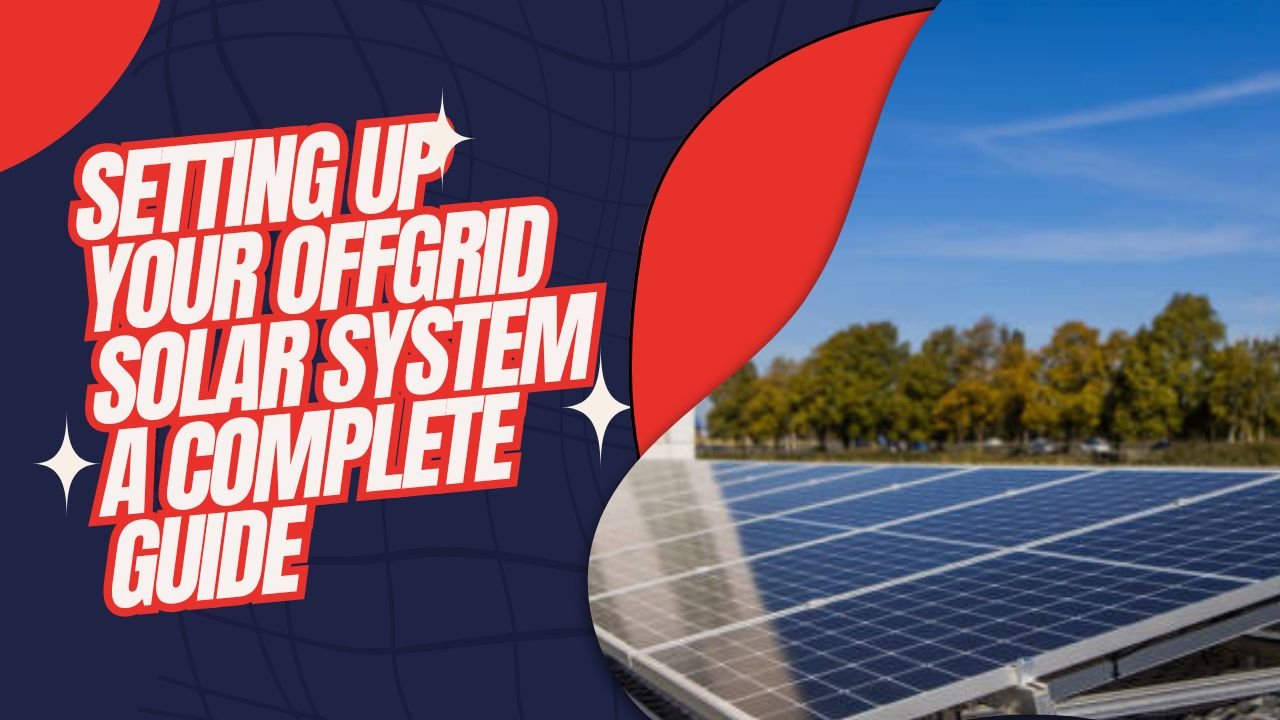Setting Up Your Offgrid Solar System imagine having the power to generate electricity wherever you are, independent of traditional energy providers. That’s the beauty of setting up an offgrid solar system. Whether you’re planning for a remote cabin, an RV adventure, or simply want to live more sustainably, solar power offers a reliable and eco-friendly solution. This guide will take you step-by-step through the process of setting up your own offgrid solar system, from understanding the basics to installation and maintenance.
Table of Contents
Understanding Offgrid Solar Systems
Before diving into the specifics, it’s essential to grasp the concept of offgrid solar systems. Unlike grid-tied systems that rely on utility-supplied electricity, offgrid systems operate independently. They store energy in batteries for use when the sun isn’t shining. This autonomy makes them ideal for locations without access to the power grid or for those seeking self-sufficiency.

Assessing Your Energy Needs
Determining how much electricity you need is the first crucial step. Calculate your daily energy consumption in kilowatt-hours (kWh) based on your appliances and lifestyle. Understanding your energy needs helps size your solar system appropriately, ensuring it can meet demand even during cloudy days.
Components of an Offgrid Solar System
Building an offgrid solar system requires several key components that work together to capture, store, and deliver electricity.
Solar Panels
Solar panels are the heart of your system, converting sunlight into electricity. Choose panels based on efficiency and available space. Monocrystalline panels are efficient but cost more, while polycrystalline panels offer a budget-friendly option.
Charge Controller
A charge controller regulates the voltage and current from the solar panels to the batteries. It prevents overcharging, prolonging battery life. MPPT (Maximum Power Point Tracking) controllers are efficient but pricier than PWM (Pulse Width Modulation) controllers.
Batteries
Batteries store excess energy for use at night or on cloudy days. Deep-cycle batteries like lead-acid or lithium-ion are suitable for solar systems due to their ability to withstand frequent charging and discharging cycles.
Power Inverter
A power inverter converts DC (direct current) from the batteries into AC (alternating current) for household appliances. Choose an inverter based on the total wattage of your appliances and the surge power needed to start certain devices.
Wiring and Mounting
Proper wiring and mounting are crucial for safety and efficiency. Use appropriately sized wires to minimize power loss and ensure secure mounting of panels to withstand wind and weather conditions.
Maintenance and Monitoring
Regular maintenance and monitoring ensure optimal performance and longevity of your system. Clean panels regularly, inspect connections, and monitor battery levels to prevent unexpected downtime.
Safety Considerations
Safety considerations include proper grounding, using insulated tools, and understanding electrical safety protocols. Ensure all components are installed according to manufacturer guidelines and local electrical codes.
Financial Considerations
Financial considerations involve calculating the initial cost of equipment, installation, and ongoing maintenance versus long-term savings on energy bills. Many governments offer incentives or rebates for installing solar systems, making them more affordable.
Installation Process
Installing an offgrid solar system involves several steps that require careful planning and execution. While it’s possible to DIY, consulting with a professional ensures compliance with local regulations and optimal system performance.
Troubleshooting Common Issues
Despite their reliability, offgrid solar systems may encounter issues such as battery degradation or inverter malfunctions. Knowing how to troubleshoot common problems ensures minimal downtime and extends the lifespan of your system.
Final Though Setting Up Your Offgrid Solar System
Setting up an offgrid solar system empowers individuals and communities to embrace renewable energy and reduce reliance on fossil fuels. By understanding the components, assessing energy needs, and following best practices in installation and maintenance, anyone can enjoy the benefits of sustainable living with solar power.
Frequently Asked Questions
1. What size solar system do I need for offgrid living? To determine the size, calculate your daily energy usage and consider factors like location and weather patterns.
2. How long do offgrid solar batteries last? Battery lifespan varies but proper maintenance can extend it. Lead-acid batteries last 5-15 years; lithium-ion batteries typically last longer.
3. Can I expand my offgrid solar system in the future? Yes, modular systems allow for expansion by adding more panels, batteries, or upgrading components as needed.
4. Do offgrid solar systems work in cloudy weather? Yes, though with reduced efficiency. Sizing your system and using efficient components can help compensate for lower sunlight levels.
5. Are offgrid solar systems cost-effective? While initial setup costs can be higher, long-term savings on electricity bills and potential incentives make them financially viable.
By following this guide, you can confidently embark on your journey to setting up an offgrid solar system. Harness the power of the sun and enjoy sustainable energy wherever you are!













